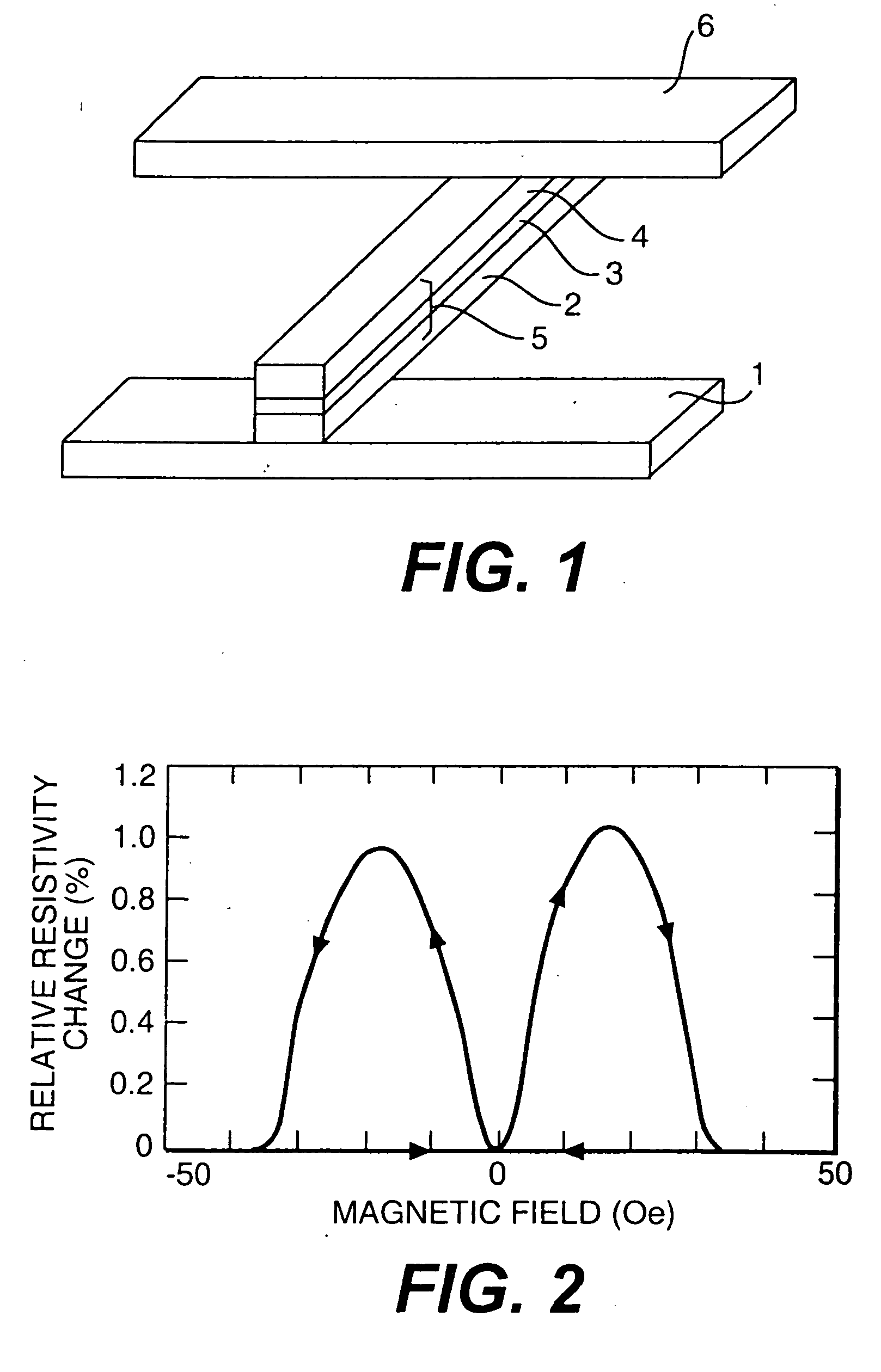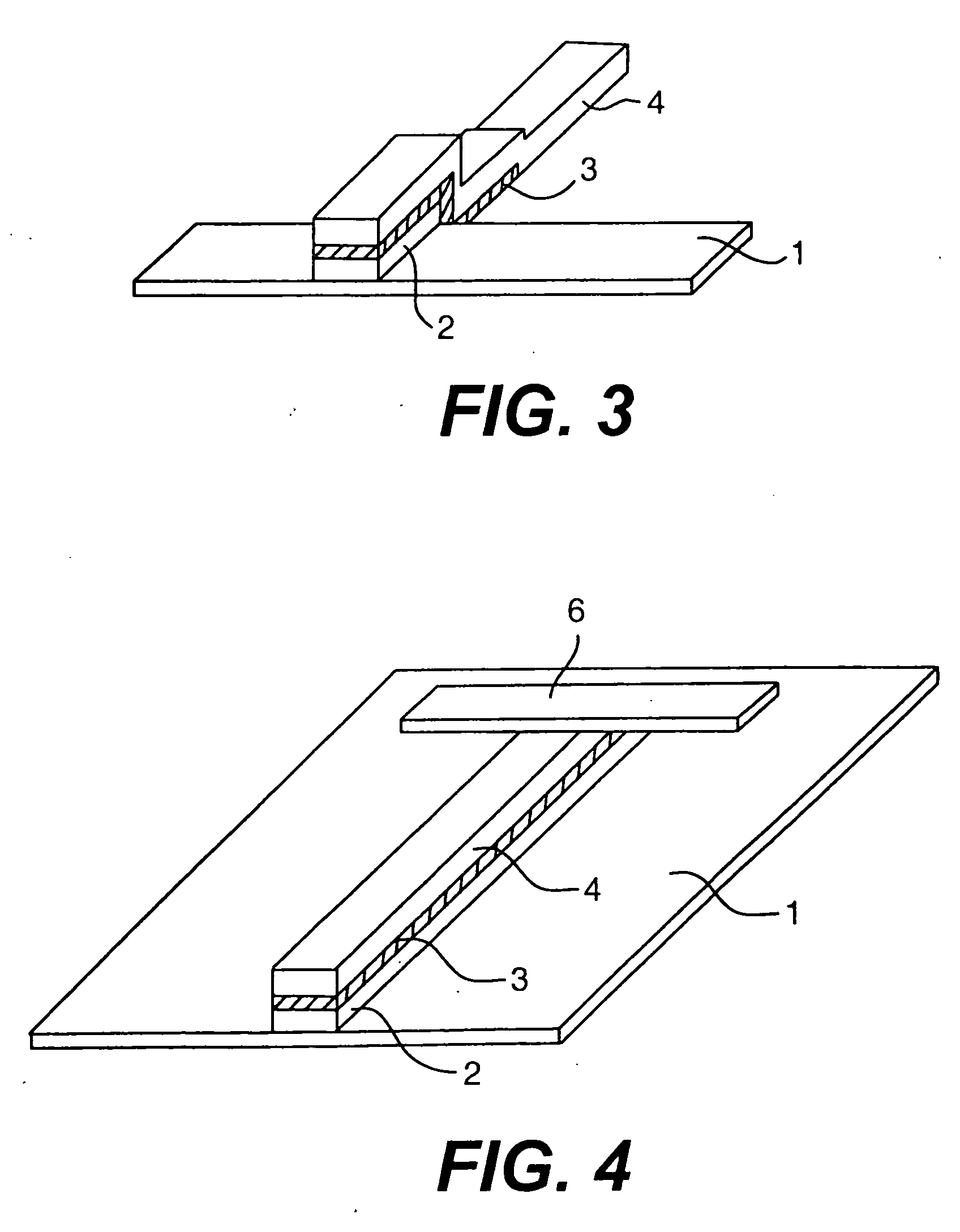Magnetoresistance effect elements, magnetic heads and magnetic storage apparatus
a technology of magnetic effect and magnetic recording medium, which is applied in special recording techniques, magnetic bodies, instruments, etc., can solve the problems of insufficient ferromagnetic ni layer and co layer intersection to precisely detect the magnetic field in a narrow region, and the magnetic flux change associated with the signal recorded in a narrow track cannot be detected with a high sensitivity, so as to achieve high sensitivity and high resolution
- Summary
- Abstract
- Description
- Claims
- Application Information
AI Technical Summary
Benefits of technology
Problems solved by technology
Method used
Image
Examples
second embodiment
[0078]FIG. 3 shows the structure of a magnetoresistance effect element of the invention.
first embodiment
[0079] The magnetoresistance effect element having the structure shown in FIG. 3 will be described in the same way as in the The process for this magnetoresistance effect element will also be described below. First, the Fe-1.3 at % Ru alloy layer 2 of 5-μm width, 8-μm length and 100-nm thickness is formed on the rectangular Cu electrode 1 of 8-μm width and 2-mm length. Then, the SiO2 layer 3 is deposited to cover all of the Fe-1.3 at % Ru alloy layer 2. Also, the Fe-1.0 at % C alloy layer 4 of 5-μm width, 100-nm thickness is formed to cover all of the SiO2-layer 3. A current is flowed between the Cu electrode 1 and the Fe-1.0 at % C alloy layer 4 and the voltage thereacross is measured.
[0080] In the magnetoresistance effect element shown in FIG. 3, all of the current is flowed in the intermediate layer, and thus the magnetoresistance effect can be effectively utilized. Also, the magnetoresistance effect films can be overlapped in a straight line, and the longitudinal (film surface)...
third embodiment
[0099]FIG. 14 shows the structure of a magnetoresistance effect element of the invention.
[0100] The ferromagnetic spin-dependent tunneling effect film which constitutes the magnetoresistance effect element is formed by an ion beam sputtering apparatus under the following conditions:
Ion gasArAr gas pressure within the2.5 × 10−2 PaapparatusAcceleration voltage of ion gun1200 Vfor evaporationIon current from ion gun for 120 mAevaporationDistance between target and 127 mmsubstrates
[0101] Corning-7059 glass was used for the substrate. The ferromagnetic tunneling effect film in this embodiment was produced by forming on a substrate 31 of a 100-nm thick lower magnetic layer 32 of Fe-1.0 at % C alloy, a 10-nm thick intermediate layer 33 of Al2O3, a 100-nm upper magnetic layer 34 of Fe-1.0 at % C alloy, and a 50-nm thick antiferromagnetic layer 35 of Cr in turn.
[0102] The magnetization curve of the ferromagnetic tunneling effect film was measured at a temperature of 4.2 K by a B-H curve t...
PUM
| Property | Measurement | Unit |
|---|---|---|
| coercive force | aaaaa | aaaaa |
| coercive force | aaaaa | aaaaa |
| magnetization | aaaaa | aaaaa |
Abstract
Description
Claims
Application Information
 Login to View More
Login to View More - R&D
- Intellectual Property
- Life Sciences
- Materials
- Tech Scout
- Unparalleled Data Quality
- Higher Quality Content
- 60% Fewer Hallucinations
Browse by: Latest US Patents, China's latest patents, Technical Efficacy Thesaurus, Application Domain, Technology Topic, Popular Technical Reports.
© 2025 PatSnap. All rights reserved.Legal|Privacy policy|Modern Slavery Act Transparency Statement|Sitemap|About US| Contact US: help@patsnap.com



